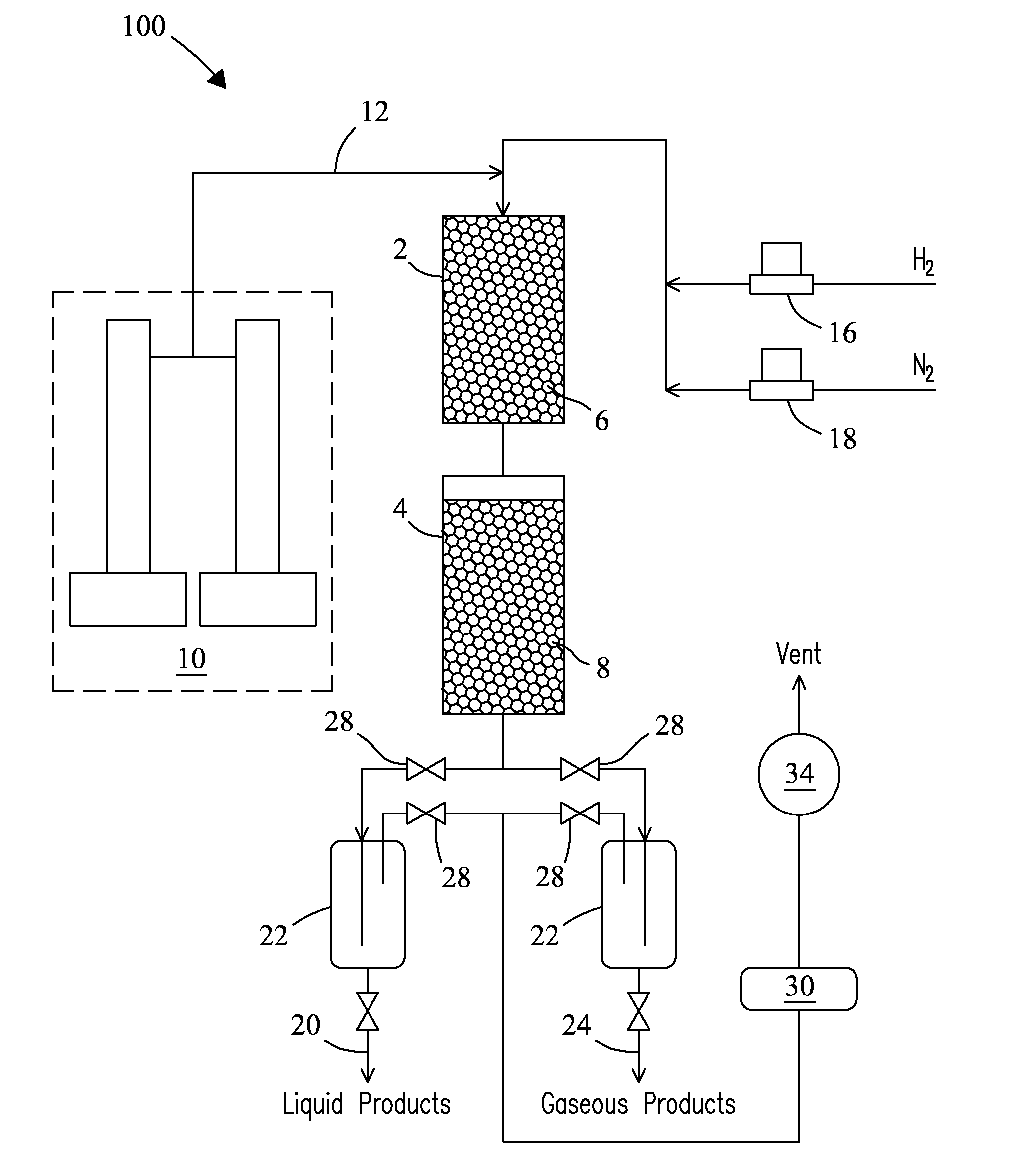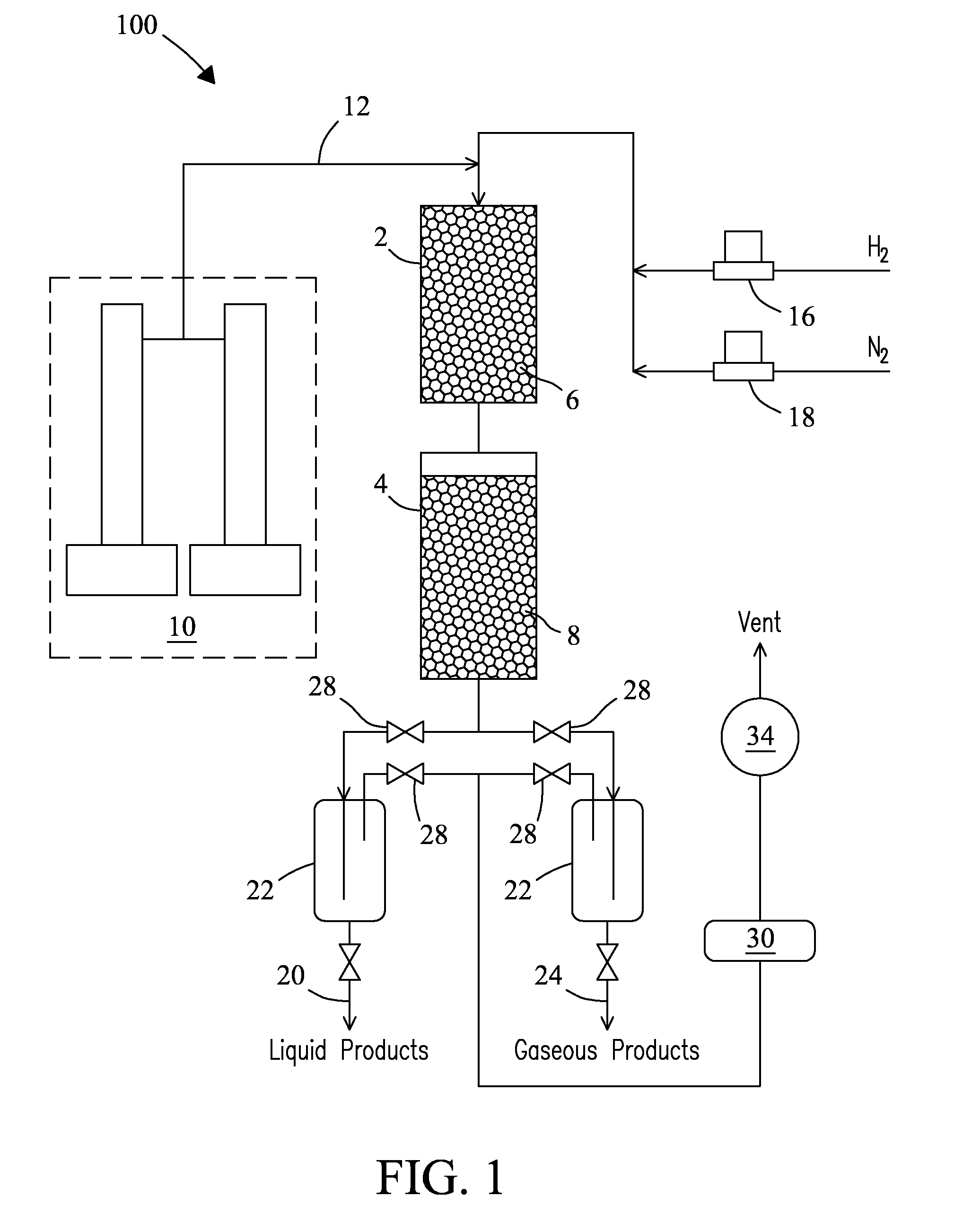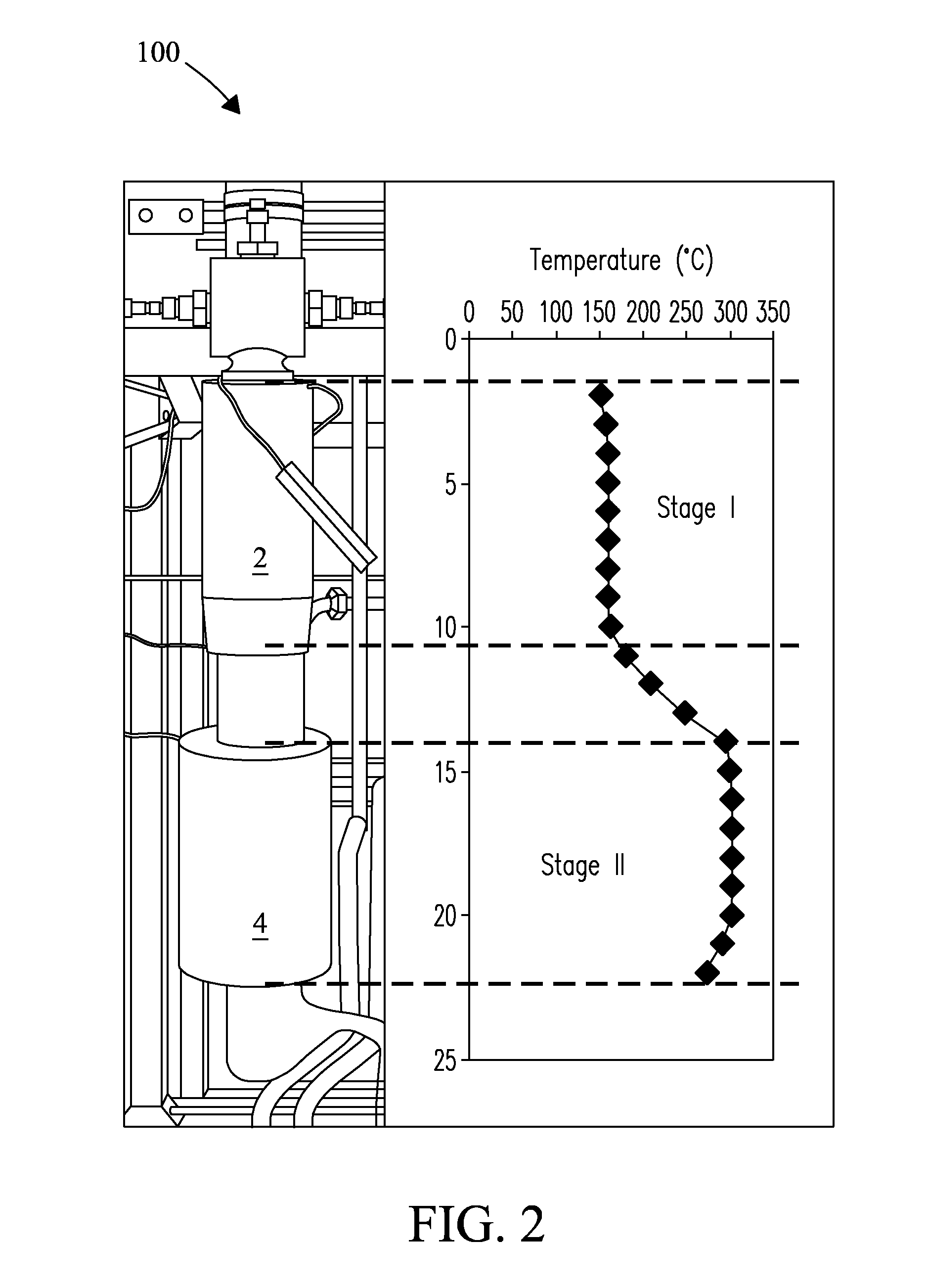Bi-functional catalyst and processes for conversion of biomass to fuel-range hydrocarbons
a biooil and fuel-range hydrocarbon technology, applied in the direction of catalyst regeneration/reactivation, catalysts, metal/metal-oxide/metal-hydroxide catalysts, etc., can solve the problems of low viscosity, poor stability, and low oxygen content of bio-oils, so as to improve the hydrogenation activity of catalysts and minimize coke formation
- Summary
- Abstract
- Description
- Claims
- Application Information
AI Technical Summary
Benefits of technology
Problems solved by technology
Method used
Image
Examples
example 1
Preparation of Hydrogenation Catalysts
[0049]Hydrogenation catalysts may be prepared by impregnating metal precursor compounds onto metal oxide supports and reducing the metal precursors in hydrogen gas (e.g., 5% hydrogen to 100% hydrogen in an inert gas) at a gas pressure of between about 0.1 MPa to about 12.0 MPa at a temperature of from about 120° C. to about 350° C. Prepared catalysts may include an extrudate size during preparation selected between about 0.20 mm and about 5.0 mm. Prepared catalysts may be used in a first stage or first stage catalyst bed of a two-stage reactor or a single-stage reactor to hydrogenate bio-oils, or to hydrogenate model compounds such as guaiacol in a single stage reactor, as detailed herein. In one example, a ruthenium on titania metal oxide catalyst (3.0% Ru: 97% metal oxide TiO2) was prepared by impregnating titania (e.g., P25 TiO2 catalyst, Evonik Industries, Essen, Germany) as the solid metal oxide support with an aqueous solution containing r...
example 2
Preparation of Bi-Functional Catalysts
[0050]In exemplary tests, catalysts containing an oxide supported metal and a solid acid were used as second step bi-functional catalysts. Bi-functional catalysts were prepared by mixing oxide supported metals catalysts (described in EXAMPLE 1) and solid acid powders at selected mass ratios. As an example, a bi-functional catalyst composed of 3 wt % Ru / TiO2 and H-ZSM-5 was prepared by physically mixing powders (particle size less than 0.10 mm) of Ru / TiO2 and H-ZSM-5 (i.e., 50 wt % Ru / TiO2 and 50 wt % H-ZSM-5) together. Prepared bi-functional catalysts were used to hydrogenate and hydrodeoxygenate bio-oils in a two-stage reactor or to hydrogenate the model compound guaiacol in a single stage reactor.
example 3
Hydrogenation and Hydrodeoxygenation of Model Compound Guaiacol
[0051]The system of FIG. 3 was used. Hydrodeoxygenation (HDO) experiments were conducted in a lab-scale catalytic hydrotreater of a fixed-bed type constructed of 316 stainless steel with dimensions ½ inch (1.3 cm) internal diameter, a length of 25 inches (63.5 cm), and a capacity of 30 mL. Feed consisted of guaiacol and xylene in a 1:1 molar ratio. Feed was introduced to the reactor system by a high-pressure metering syringe pump. Hydrogen flow rate was controlled by a mass flow controller. Temperatures of the catalyst beds were monitored with thermocouples. Catalysts were treated by flowing pure H2 at 0.5 MPa from ambient temperature to 300° C. at 0.04° C. / s for 2 hrs before initiating the test. Reaction was conducted at a temperature between 160° C. and 280° C. at a hydrogen gas (H2) pressure of between 1.0 MPa and 3.0 MPa. An initial 5 hr stabilization period at temperature was used to allow the reactor to reach a ste...
PUM
| Property | Measurement | Unit |
|---|---|---|
| pressure | aaaaa | aaaaa |
| pressure | aaaaa | aaaaa |
| temperature | aaaaa | aaaaa |
Abstract
Description
Claims
Application Information
 Login to View More
Login to View More - R&D
- Intellectual Property
- Life Sciences
- Materials
- Tech Scout
- Unparalleled Data Quality
- Higher Quality Content
- 60% Fewer Hallucinations
Browse by: Latest US Patents, China's latest patents, Technical Efficacy Thesaurus, Application Domain, Technology Topic, Popular Technical Reports.
© 2025 PatSnap. All rights reserved.Legal|Privacy policy|Modern Slavery Act Transparency Statement|Sitemap|About US| Contact US: help@patsnap.com



